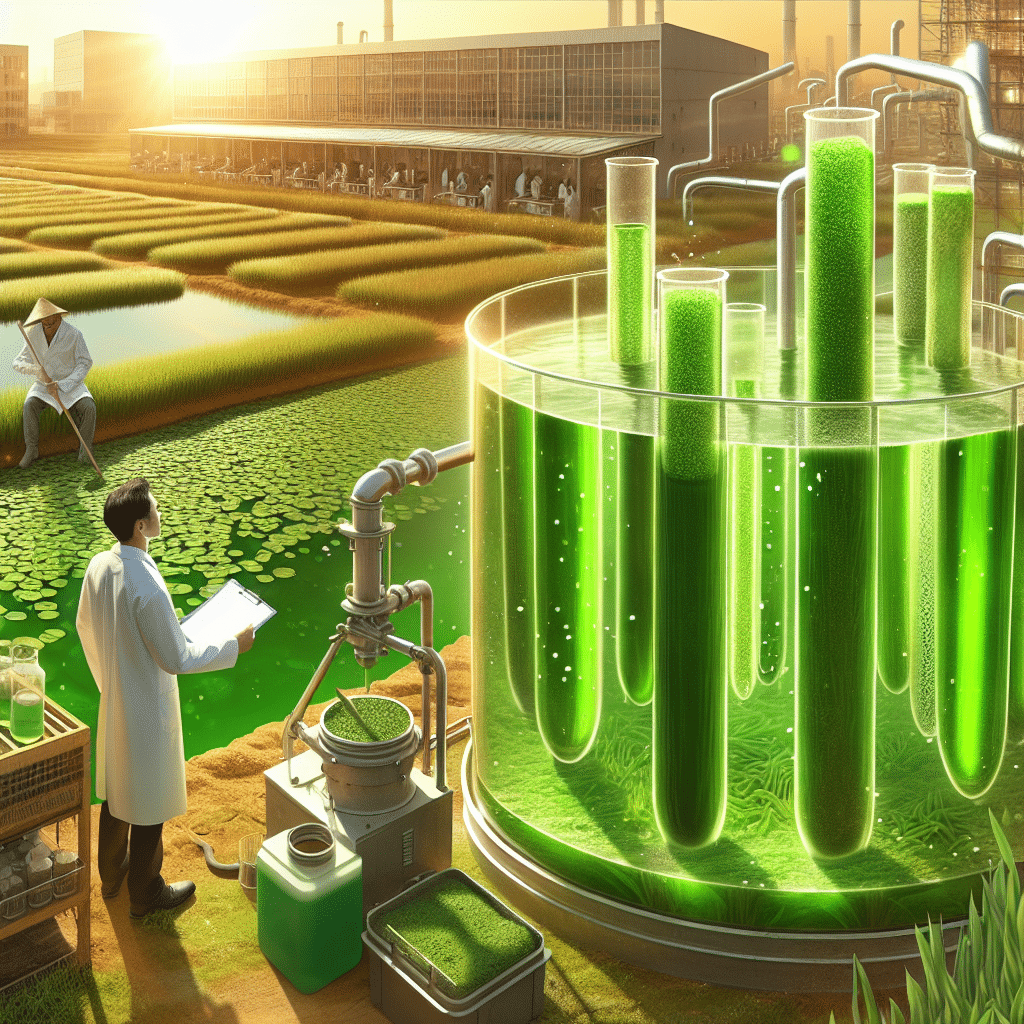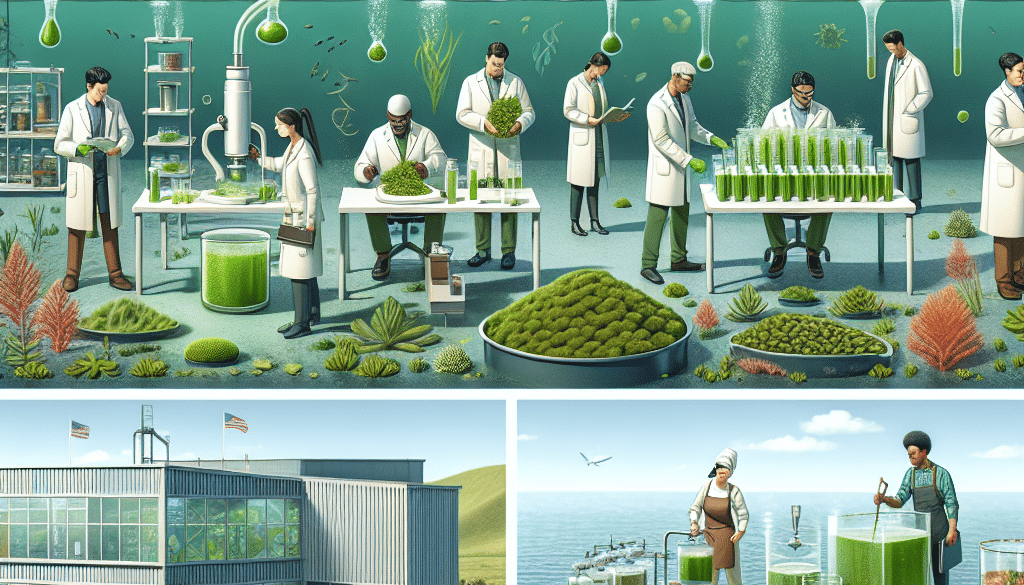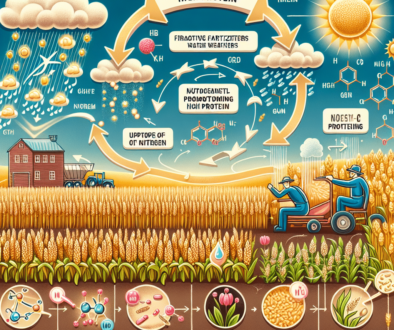Where Do You Get Microalgae?
-
Table of Contents
Microalgae: The Green Gold – Sources and Applications

Microalgae, often referred to as the green gold of biotechnology, are microscopic algae, typically found in freshwater and marine systems. They are capable of performing photosynthesis and are essential to the global ecosystem as they produce approximately half of the atmospheric oxygen while also serving as the base of the food chain in aquatic environments. Beyond their ecological importance, microalgae have garnered attention for their potential in various industries, including biofuel production, nutrition, cosmetics, and pharmaceuticals. This article explores the various sources of microalgae and their multifaceted applications.
Understanding Microalgae
Before delving into where to get microalgae, it’s essential to understand what they are and why they are so valuable. Microalgae are diverse, with over 50,000 different species, each with unique properties and potential uses. They are rich in proteins, lipids, carbohydrates, and other bioactive compounds, making them a sustainable resource for numerous applications.
Natural Sources of Microalgae
Microalgae occur naturally in a wide range of environments. They can be found in both saltwater and freshwater systems, from oceans and seas to lakes and rivers. They are also present in damp terrestrial environments, such as soil and rocks. The natural collection of microalgae is possible but often not practical for commercial use due to the difficulty in harvesting and the potential environmental impact.
Commercial Cultivation of Microalgae
For commercial purposes, microalgae are typically cultivated in controlled environments that allow for the management of growth conditions and optimization of algae production. There are two main methods of cultivating microalgae:
- Open Pond Systems: These are the simplest and most cost-effective method of cultivating microalgae. Open ponds are typically shallow artificial ponds that are exposed to natural sunlight. The main challenge with open pond systems is contamination by other microorganisms and the reliance on suitable weather conditions.
- Photobioreactors (PBRs): PBRs are closed systems that provide a controlled environment for microalgae growth. They can be designed in various ways but typically consist of transparent tubes or containers that allow for the precise control of light, temperature, pH, and nutrients. PBRs are more expensive than open ponds but offer higher productivity and purity of the microalgae cultures.
Both systems have their advantages and disadvantages, and the choice between them often depends on the specific species of microalgae being cultivated and the intended application.
Applications of Microalgae
Microalgae have a wide range of applications across various industries. Here are some of the most notable uses:
- Biofuels: Microalgae can be used to produce biodiesel, bioethanol, and biogas. They are a promising alternative to traditional biofuel sources due to their high yield and minimal land use requirements.
- Nutrition: Microalgae such as Spirulina and Chlorella are rich in proteins, vitamins, and minerals, making them excellent dietary supplements.
- Pharmaceuticals: The bioactive compounds in microalgae have been studied for their potential in treating various diseases and health conditions.
- Cosmetics: Microalgae extracts are used in skincare products due to their antioxidant and anti-inflammatory properties.
- Wastewater Treatment: Microalgae can be used in wastewater treatment plants to remove nutrients and heavy metals from water.
These applications demonstrate the versatility of microalgae and their potential to contribute to sustainable development and innovation.
Case Studies and Statistics
Several case studies highlight the successful commercialization of microalgae. For instance, companies like Algenol have developed technologies to produce biofuels from microalgae on a large scale. In the nutrition sector, microalgae-based products like Spirulina and Chlorella supplements have become increasingly popular due to their health benefits.
Statistics show that the microalgae market is growing rapidly. According to a report by Grand View Research, the global algae products market size was valued at USD 3.98 billion in 2020 and is expected to grow at a compound annual growth rate (CAGR) of 5.3% from 2021 to 2028. This growth is driven by increasing demand for plant-based products and sustainable alternatives to traditional resources.
Conclusion
In conclusion, microalgae are a valuable resource with a wide range of applications across various industries. They can be sourced from natural environments or cultivated commercially in open pond systems or photobioreactors. The growing interest in sustainable and plant-based products is driving the expansion of the microalgae market, making it an exciting area for investment and innovation. As research continues to uncover new uses for microalgae, their role in a sustainable future becomes increasingly significant.
Discover ETprotein’s High-Quality Protein Products
If you’re interested in sustainable, plant-based nutrition, ETprotein offers a range of high-quality protein products derived from microalgae and other sources. Their offerings include organic rice protein, pea protein, and various seed proteins, all characterized by a neutral taste, non-GMO, and allergen-free attributes. ETprotein’s products cater to industries such as nutraceuticals, pharmaceuticals, cosmeceuticals, and food and beverage, providing comprehensive solutions for your protein needs.
ETprotein’s specialization in exporting and delivering tailor-made protein powder and nutritional supplements makes them a trusted partner for leading global brands. To learn more about their products or to request a sample, contact ETprotein and email sales(at)ETprotein.com today.
About ETprotein:
ETprotein, a reputable protein and L-(+)-Ergothioneine (EGT) Chinese factory manufacturer and supplier, is renowned for producing, stocking, exporting, and delivering the highest quality organic bulk vegan proteins and L-(+)-Ergothioneine. They include Organic rice protein, clear rice protein, pea protein, clear pea protein, watermelon seed protein, pumpkin seed protein, sunflower seed protein, mung bean protein, peanut protein, and L-(+)-Ergothioneine EGT Pharmaceutical grade, L-(+)-Ergothioneine EGT food grade, L-(+)-Ergothioneine EGT cosmetic grade, L-(+)-Ergothioneine EGT reference grade and L-(+)-Ergothioneine EGT standard. Their offerings, characterized by a neutral taste, non-GMO, allergen-free attributes, with L-(+)-Ergothioneine purity over 98%, 99%, cater to a diverse range of industries. They serve nutraceutical, pharmaceutical, cosmeceutical, veterinary, as well as food and beverage finished product distributors, traders, and manufacturers across Europe, USA, Canada, Australia, Thailand, Japan, Korea, Brazil, and Chile, among others.
ETprotein specialization includes exporting and delivering tailor-made protein powder and finished nutritional supplements. Their extensive product range covers sectors like Food and Beverage, Sports Nutrition, Weight Management, Dietary Supplements, Health and Wellness Products, and Infant Formula, ensuring comprehensive solutions to meet all your protein needs.
As a trusted company by leading global food and beverage brands and Fortune 500 companies, ETprotein reinforces China’s reputation in the global arena. For more information or to sample their products, please contact them and email sales(at)ETprotein.com today.














